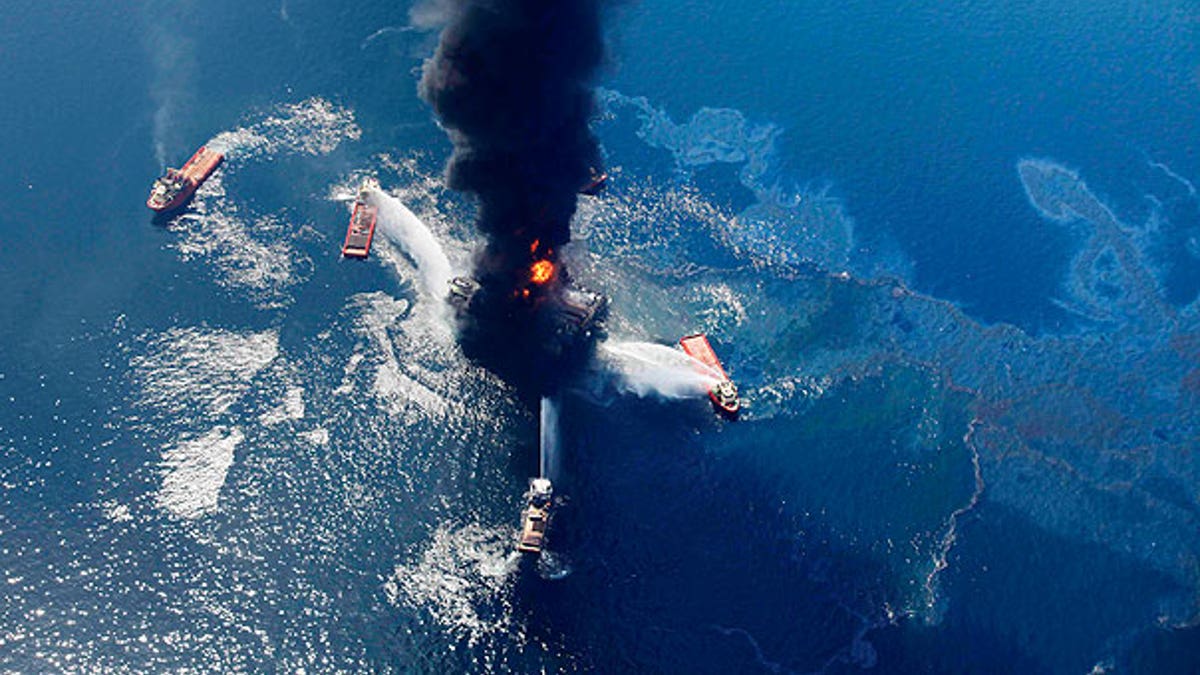
Apr. 21: An oil slick is seen as the Deepwater Horizon oil rig burns in the Gulf of Mexico. (AP2010)
In the minutes after a cascade of gas explosions crippled the Deepwater Horizon on April 20, confusion reigned on the drilling platform. Flames were spreading rapidly, power was out, and terrified workers were leaping into the dark, oil-coated sea. Capt. Curt Kuchta, the vessel's commander, huddled on the bridge with about 10 other managers and crew members.
Andrea Fleytas, a 23-year-old worker who helped operate the rig's sophisticated navigation machinery, suddenly noticed a glaring oversight: No one had issued a distress signal to the outside world, she recalls in an interview. Ms. Fleytas grabbed the radio and began calling over a signal monitored by the Coast Guard and other vessels.
"Mayday, Mayday. This is Deepwater Horizon. We have an uncontrollable fire."
When Capt. Kuchta realized what she had done, he reprimanded her, she says.
"I didn't give you authority to do that," he said, according to Ms. Fleytas, who says she responded: "I'm sorry."
Part Two of a Journal investigation finds the doomed oil rig was unprepared for disaster, hobbled by a complex chain of command and a balky decision-making structure.
An examination by The Wall Street Journal of what happened aboard the Deepwater Horizon just before and after the explosions suggests the rig was unprepared for the kind of disaster that struck and was overwhelmed when it occurred. The events on the bridge raise questions about whether the rig's leaders were prepared for handling such a fast-moving emergency and for evacuating the rig—and, more broadly, whether the U.S. has sufficient safety rules for such complex drilling operations in very deep water.
The chain of command broke down at times during the crisis, according to many crew members. They report that there was disarray on the bridge and pandemonium in the lifeboat area, where some people jumped overboard and others called for boats to be launched only partially filled.
The vessel's written safety procedures appear to have made it difficult to respond swiftly to a disaster that escalated at the speed of the events on April 20. For example, the guidelines require that a rig worker attempting to contain a gas emergency had to call two senior rig officials before deciding what to do. One of them was in the shower during the critical minutes, according to several crew members.

